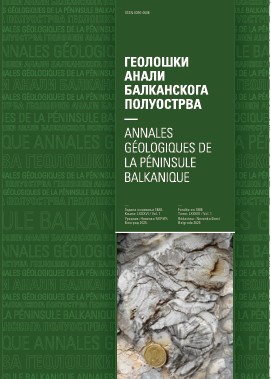Paleoseismological features and tectonic setting of the Fethiye-Burdur Fault Zone (SW Turkey)
Abstract
The Fethiye-Burdur fault zone is not a single line. Still, it consists of discontinuous northeasterly trending fault segments developed parallel to each other between the Gulf of Fethiye and Burdur Lake. The NE-trending and left-lateral oblique-slip Fethiye-Burdur fault zone bounds the Isparta Angle to the west and is probably a continuation of the Pliny fault zone of the Hellenic arc. 1914, 1957, and 1971 earthquakes occurred in the Fethiye-Burdur fault zone, with magnitudes of 7.1, 7.0, and 6.1, respectively. The epicenter distribution of the last century of earthquakes indicates the continuation of the Fethiye- Burdur fault zone under the Gulf of Fethiye, probably to Rhodos Island.
According to GPS measurements, the Fethiye-Burdur fault zone is the southern limit of the Aegean extensional region. The Aegean region is characterized by coherent motion toward the SW at 30 mm/yr relative to the Eurasian plate. Field observations and fault plane solutions of recent earthquakes in and around the Burdur Lake region reflect normal and left-lateral oblique faulting considering the NE extension of the fault zone.
According to the proposed kinematic model, the different seismotectonic behaviors of the Burdur fault zone originate in the rigid influence of Yeşilova peridotite massif of the Lycian nappes that occur to the SW of Burdur Lake. The kinematic interactions between the mainly NE- trending en-echelon fault constituents of the Fethiye-Burdur fault zone result in different seismotectonic characteristics.
Copyright (c) 2023 Geološki anali Balkanskoga poluostrva

This work is licensed under a Creative Commons Attribution 4.0 International License.










